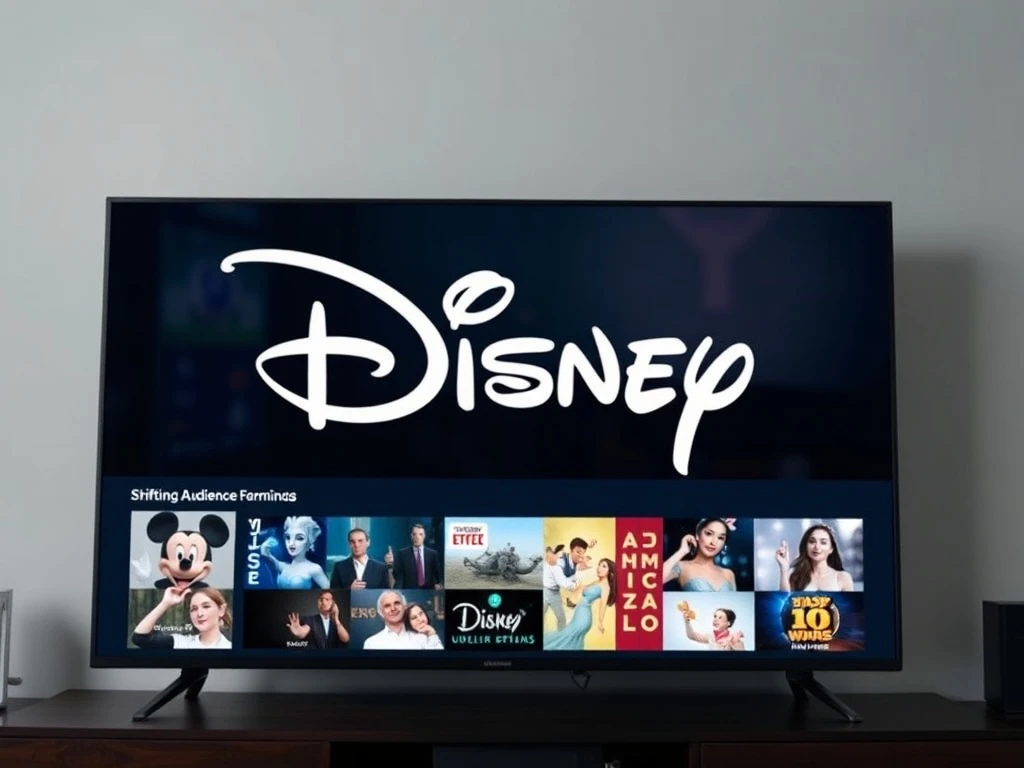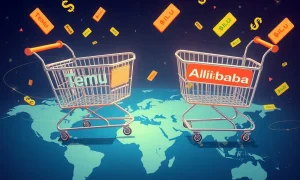The landscape of television consumption is undergoing a seismic shift. Indeed, traditional TV customers are increasingly abandoning cable and satellite subscriptions, commonly known as ‘cord-cutting.’ This significant trend has prompted major media companies to re-evaluate their strategies. Consequently, Disney, a global entertainment powerhouse, has announced an unexpected move, signaling a pivotal shift in its approach to content distribution. This article delves into Disney’s bold new Disney streaming strategy, exploring its implications for both the company and the wider industry.
Understanding the Shift in Disney Streaming Landscape
For many years, cable and satellite television dominated home entertainment. However, digital platforms have rapidly changed this dynamic. Consumers now seek more flexible, on-demand viewing options. As a result, the rise of subscription video-on-demand (SVOD) services like Netflix, Hulu, and Disney+ has fundamentally altered viewer habits. This transition has led to a noticeable decline in traditional TV viewership and revenue. Consequently, media giants must adapt or risk losing market share.
Several factors contribute to this ongoing exodus. First, the high cost of traditional cable packages often includes many unwanted channels. Secondly, streaming services offer unparalleled convenience, allowing viewers to watch content anytime, anywhere. Furthermore, the sheer volume of exclusive content available on streaming platforms provides a compelling alternative. Therefore, companies like Disney must innovate to remain competitive. The imperative to evolve is clear: secure future growth in a rapidly changing environment.
The Cord-Cutting Phenomenon: Why Customers Are Leaving
The term ‘cord-cutting’ describes the practice of canceling traditional television subscriptions in favor of internet-based streaming services. This phenomenon is not new, but its acceleration has put immense pressure on legacy media companies. Clearly, several key reasons drive this trend. Understanding these drivers helps illuminate Disney’s strategic decisions regarding its Disney streaming future.
- Cost Savings: Streaming bundles are often significantly cheaper than traditional cable. Consumers actively seek ways to reduce household expenses. Thus, this financial incentive is a primary driver.
- Content Control: Viewers desire control over what they watch and when. Streaming platforms offer vast libraries and on-demand access. This empowers consumers to tailor their viewing experience.
- Ad Fatigue: Traditional TV broadcasts feature numerous commercial breaks. Conversely, many streaming services offer ad-free tiers. This enhances the viewing experience significantly.
- Technological Advancement: High-speed internet and smart devices make streaming seamless. Accessing content has never been easier or more intuitive. Consequently, technology facilitates this shift.
As these factors converge, the urgency for media companies to respond effectively grows. Indeed, Disney’s recent announcement reflects this pressing need for adaptation.
Disney’s Bold New Disney Streaming Strategy
Facing declining linear TV viewership and a competitive streaming market, Disney has unveiled a significant strategic pivot. This unexpected move aims to consolidate its position and attract a new generation of subscribers. Specifically, the company is focusing on enhancing its direct-to-consumer (DTC) offerings. This involves a multi-pronged approach designed to maximize subscriber value and minimize churn. Essentially, Disney seeks to leverage its vast content library in new, innovative ways.
The core of this new Disney streaming strategy involves deeper integration and cross-promotion across its flagship services: Disney+, Hulu, and ESPN+. Furthermore, Disney is exploring new pricing tiers and content windows to appeal to a broader audience. This strategic shift underscores a commitment to the future of digital entertainment. It also recognizes the changing preferences of its global customer base. Therefore, Disney is not merely reacting but proactively shaping its destiny in the digital age.
Key Pillars of the Enhanced Disney Streaming Offering
Disney’s comprehensive strategy rests on several crucial pillars. These initiatives aim to create a more cohesive and attractive streaming ecosystem. Moreover, they are designed to combat the challenges posed by cord-cutting and intense market competition. Understanding these pillars is vital to grasping the full scope of Disney’s ambition.
- Bundling and Integration: Disney is intensifying its efforts to bundle Disney+, Hulu, and ESPN+. This offers consumers a comprehensive entertainment package at a competitive price. Furthermore, a single user interface or seamless navigation between apps is a priority.
- Ad-Supported Tiers: Recognizing the demand for more affordable options, Disney has introduced and is expanding ad-supported tiers for its services. This provides a lower entry point for cost-conscious consumers. It also diversifies revenue streams for the company.
- Content Strategy Refinement: The company continues to invest heavily in original content for its streaming platforms. However, it is also re-evaluating content licensing and release windows. This ensures optimal utilization of its intellectual property. Additionally, it maximizes subscriber acquisition and retention.
- Global Expansion: Disney continues its aggressive global rollout of Disney+. Adapting content and pricing to local markets is key. This broadens its potential subscriber base significantly.
These strategic choices demonstrate Disney’s commitment to evolving with consumer demand. They also highlight a determination to maintain its leadership position in entertainment.
Impact on Consumers and Competitors
Disney’s strategic pivot in Disney streaming will undoubtedly have wide-ranging effects. Consumers will experience both benefits and potential adjustments. Meanwhile, competitors in the streaming space will need to respond to Disney’s aggressive maneuvers. Analyzing these impacts provides a clearer picture of the evolving entertainment landscape.
Benefits for Consumers
For consumers, Disney’s enhanced streaming strategy offers several advantages. First, the bundled offerings provide significant value. Access to a vast library of movies, TV shows, and live sports becomes more affordable. Secondly, the introduction of ad-supported tiers makes premium content accessible to a broader demographic. This democratizes entertainment consumption. Moreover, a more streamlined user experience across Disney’s platforms could simplify content discovery. Ultimately, these changes aim to improve the overall customer experience. They also offer more choice and flexibility in how people consume media.
Challenges for Competitors
Disney’s robust content library and brand recognition pose a formidable challenge to its rivals. Netflix, Amazon Prime Video, and Max (formerly HBO Max) are all vying for subscriber attention. Disney’s aggressive bundling and pricing could force competitors to re-evaluate their own strategies. They might need to consider similar bundling initiatives or adjust their pricing models. Furthermore, the battle for exclusive content will intensify. This could lead to higher production costs across the industry. Therefore, the competitive landscape will likely become even more dynamic and innovative.
The Future of Disney Streaming and Entertainment
The ongoing transformation of the entertainment industry shows no signs of slowing down. Disney’s unexpected move reflects a proactive stance in this evolving environment. Its focus on Disney streaming, particularly through enhanced bundling and diverse pricing, positions the company for sustained growth. However, success hinges on continuous innovation and a deep understanding of consumer preferences. The ability to adapt quickly to new technologies and viewing habits will be paramount.
Looking ahead, we can expect further consolidation in the streaming market. Strategic partnerships and acquisitions may become more common as companies seek to expand their content libraries and reach. Furthermore, the integration of interactive elements and personalized experiences will likely become standard. The line between traditional media and digital entertainment will continue to blur. Ultimately, the future of entertainment is increasingly digital, direct, and driven by consumer choice. Disney’s bold strategy aims to lead this charge.
In conclusion, Disney’s strategic shift in response to the exodus of traditional TV customers is a testament to its adaptability. By focusing on a comprehensive Disney streaming strategy that emphasizes value, accessibility, and integration, the company is not just reacting but actively shaping the future of media consumption. This move will undoubtedly serve as a blueprint for other industry players navigating the complexities of the modern entertainment landscape.
Frequently Asked Questions (FAQs)
What is the main reason for Disney’s new streaming strategy?
The primary reason for Disney’s new Disney streaming strategy is the significant decline in traditional TV subscriptions, also known as ‘cord-cutting.’ Customers are shifting to more flexible and affordable digital streaming services, prompting Disney to adapt its business model to retain and attract subscribers in this evolving market.
How does Disney’s new strategy benefit consumers?
Consumers benefit from Disney’s new strategy through more affordable bundled options for Disney+, Hulu, and ESPN+, offering greater value. Additionally, the introduction of ad-supported tiers provides lower-cost access to premium content, increasing accessibility and choice for a wider audience.
Will Disney’s new move impact the pricing of its streaming services?
Yes, Disney’s new strategy includes a focus on diverse pricing tiers, such as ad-supported options, which can offer more affordable entry points. While some premium tiers may see adjustments, the overall goal is to provide a range of pricing options to suit different consumer budgets and preferences.
How does this strategy affect Disney’s competitors in the streaming market?
Disney’s aggressive bundling and content strategy will likely intensify competition in the streaming market. Rivals like Netflix and Amazon Prime Video may need to re-evaluate their own pricing, bundling, and content acquisition strategies to remain competitive against Disney’s comprehensive offerings.
What is ‘cord-cutting’ and why is it happening?
‘Cord-cutting’ refers to consumers canceling their traditional cable or satellite television subscriptions in favor of internet-based streaming services. This trend is driven by factors such as the high cost of traditional TV packages, the desire for on-demand content control, ad fatigue, and the increasing ease of accessing content through technological advancements.






















